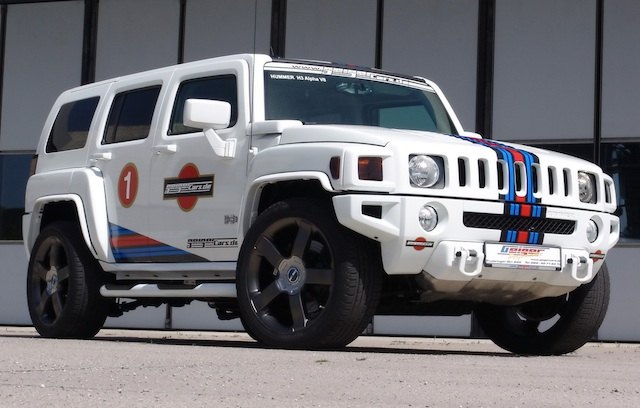#GlobalWarming
Skeptical Environmentalist Bjrn Lomborg Says Electric Cars Kill More Than ICEs
In an op-ed in USA Today, headlined “Electric car benefits? Just myths“, author of The Skeptical Environmentalist, Bjørn Lomborg, calls for people to “stop our green worship of the electric car,” arguing that EVs end up costing society a lot of money while doing little to cut emissions of carbon dioxide. Even more provocatively, Lomborg claims that because EVs are, for the most part, ultimately powered by coal fired electrical generating plants, the pollution associated with cars that run on electrons will end up killing almost twice as many people as that created by gasoline powered vehicles.
Coolant In Daimler-EU Dispute Found Safe
An automotive coolant Daimler claims is too dangerous to use in their vehicles, despite the warnings from the European Union to cease usage of an older coolant considered harmful to the environment, was found to be safe according to a report made by EU scientists.
Introducing Toyota's Tropospheric Ozone-Concentration Simulator. Eat Your Heart Out, Bob Lutz
According to one car guy, global warming is a crock of excrement. Toyota wants to get to the bottom of it. Toyota Motor Corporation and Toyota Central R&D Labs have developed a simulator able to predict tropospheric ozone concentrations across the whole of South and East Asia.
Because Polars Bears Are Cuter Than Market Failure…
To hype its forthcoming Leaf electric car, Nissan has reached for the most manipulative imagery in the green marketing playbook: the Polar Bear. They’re cute, they’re cuddly, and because their icy habitat is being destroyed by regular cars, they will hug you if you buy an EV. Meanwhile, the causes, trajectory, and impacts of global climate change (not to mention its possible solutions) remain extremely abstract and far-away when compared to the political and economic ramifications of global oil undersupply. Too bad market failures and geopolitical instability aren’t as emotionally manipulative as those fuzzy bear guys…
15m Or More Cars In China. How It Affects Peak Oil And Global Warming
It’s definitely official now. The last word in Chinese vehicle sales has the China Association of Automobile Manufacturers (CAAM,) and the CAAM has spoken. Vehicle sales in China last year rose 46.2 percent to 13.64m units. This is not surprising, but it is nonetheless reassuring that the 13.6m number TTAC had reported last week was only 40,000 short. It is equally official that China is the world’s largest auto market, ahead of the U.S.A. by 3m units, more or less.
Vehicle sales in December alone rose 91.7 percent from a year earlier to 1.41m units in China, the CAAM said. Passenger car sales jumped 88.7 percent in the last month to 1.1m units. Full-year 2009 China passenger car sales are up 52.9 percent in 2009 to 10.3m. If passenger cars alone would count, then the truck and SUV happy USA would look like a 3rd world country: According to Automotive News [sub], only 5.7m new “passenger cars” drove off U.S. dealers’ lots in 2009, slightly more than half of what the Chinese bought.
Will the sales boom continue in 2010? Not as mad as in 2009, expects the CAAM. The manufacturers association expects growth to continue at a more moderate pace of 10 percent. This would mean 1.36m units in additional sales, or a total of a little less than 15m. Merrill Lynch is a little more bullish and thinks that the Chinese market will grow to 15.5 million vehicles this year, the Nikkei [sub] reports. A horrific thought to those who are scared that Chinese will use all our oil, and that melting polar caps will destroy the value of our waterfront properties. Wait, it’s getting worse.
Cash for Clunkers "Green" Goal a Flop
Some politicians who supported the Cash for Clunkers program didn’t want to be seen promoting a billion dollar (or three) bailout for car dealers, what with car dealers rating just above sex offenders as “people who I’d like to support with my taxes.” So, not surprisingly, the C4C bill was wrapped in a mantle of green; structured to reward buyers who traded gas guzzlers for [marginally] more fuel efficient vehicles. In practice, the “program mostly involved swaps of old Ford or Chevrolet pickups for new ones that got only marginally better gas mileage, according to an analysis of new federal data by The Associated Press. The single most common swap — which occurred more than 8,200 times — involved Ford F150 pickup owners who took advantage of a government rebate to trade their old trucks for new Ford F150s. They were 17 times more likely to buy a new F150 than, say, a Toyota Prius. The fuel economy for the new trucks ranged from 15 mpg to 17 mpg based on engine size and other factors, an improvement of just 1 mpg to 3 mpg over the clunkers.” It gets worse . . .



















Recent Comments